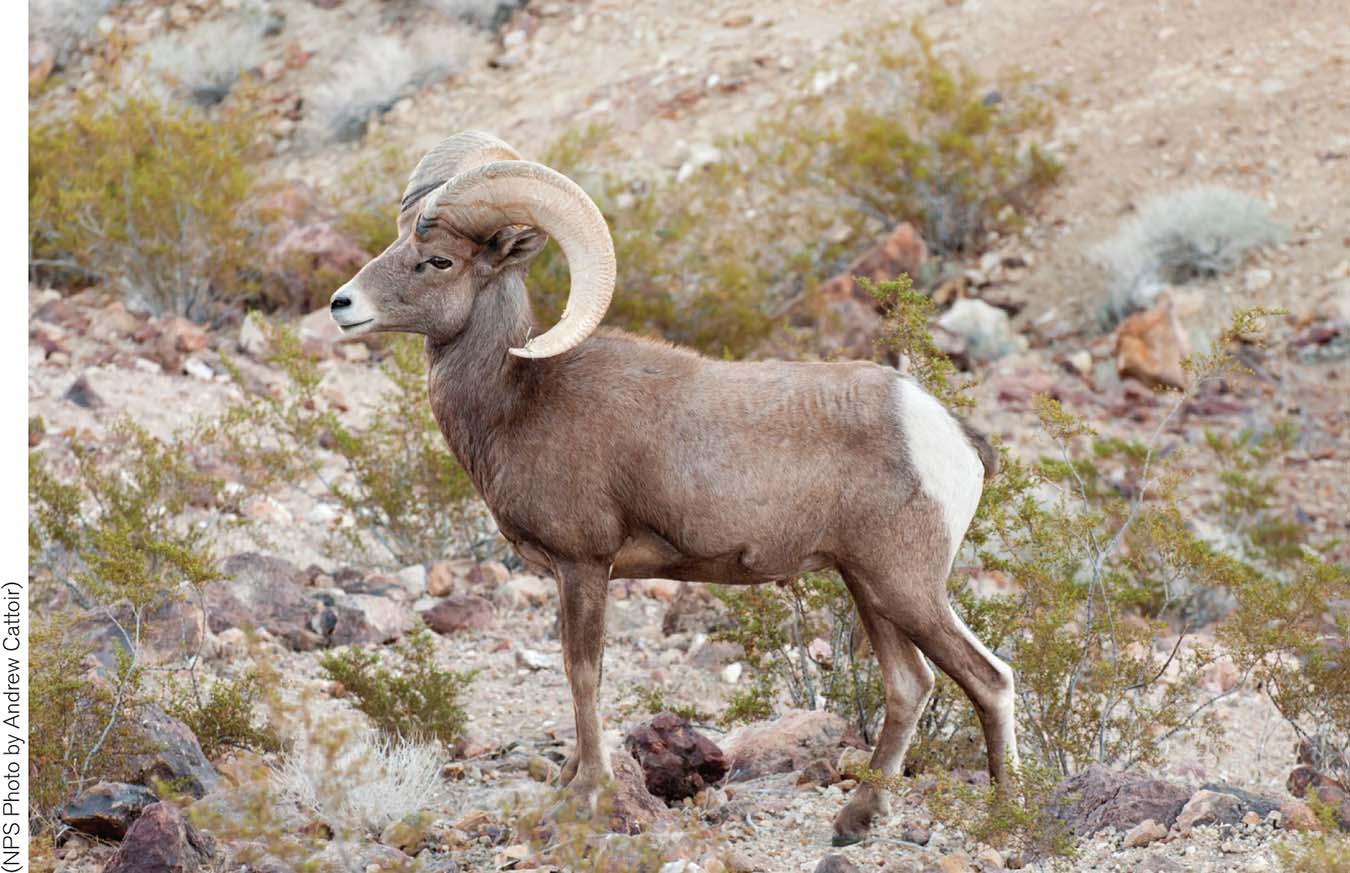10.4 Solar power remains costly and can damage the environment
10.4–
310
Renewable energy development comes with many benefits, including reduced mining impacts, much lower production of climate-
As we push for rapid development of renewable energy resources, we run the risk of damaging critical wildlife habitat. A single switching station, called Tres Amigas and planned for eastern New Mexico, will join three major electrical grids of the United States and will require the clearing and development of 57 square kilometers (22 square miles) of land. The new transmission lines serving such facilities could have an even more extensive impact. However, this is just the beginning. Siting of wind and solar energy farms, electrical switching facilities, and transmission lines on the plains, valleys, and mountains of the region has the potential to damage or destroy large tracts of natural habitat.
Habitat Destruction and Fragmentation
Agassiz’s desert tortoise, Gopherus agassizii, is about the size of an American football and lives in the deserts of the southwestern United States, a region where solar developments have been expanding rapidly. At one time, you could find as many as 1,000 tortoises per square mile, but their numbers have declined significantly due to livestock grazing, off-
Figure 10.24 shows potential areas for solar energy developments in deserts. Several of those areas fall within the range of the Agassiz tortoise and a related species of conservation concern, Morafka’s desert tortoise, G. morafkai. Tortoises and other species living near solar developments are vulnerable to vehicle traffic, the collapse of burrows by heavy equipment, destruction of habitat through vegetation removal, altered topography and drainage patterns, and road construction. These threats not only impact wildlife populations but also add to the costs of constructing and operating solar power plants. For example, Bright Source Energy, a company developing solar energy in the Ivanpah Valley in California, spent more than $56 million protecting and relocating desert tortoises. Mitigation efforts included building an 80-

311
In addition to damaging habitat and adding to mortality in wildlife populations, energy development will bring new service roads to the deserts of the southwestern United States, fragmenting habitats and impeding the movements of threatened animals. In the Southwest, desert tortoises, desert bighorn sheep, and desert mule deer could be seriously affected (Figure 10.25).

Water Consumption by Concentrating Solar Power
Although concentrating solar power stations can reduce our reliance on nonrenewable resources, they can potentially consume a large amount of water and generally operate in arid regions where water is scarce. The most energetically efficient concentrating solar power plants draw on turbine designs developed in coal-
As shown in Figure 10.4 (see page 299), the areas receiving the highest amounts of solar energy are concentrated in arid and semi-

Competitive Energy Returns on Investment

How might efforts to protect desert tortoise habitat benefit other species in the ecosystem?
A critical test of the sustainability of any energy source is how much energy must be expended to obtain it. For example, to prepare coal to generate electricity, it must be mined, processed, and transported to a power station, all of which require energy. During the production of photovoltaic cells, energy is expended in producing the semiconductor crystals, fabricating the solar cells, and building the inverter, which converts direct current (dc) to the alternating current (ac) used in the electrical grid.
energy return on energy investment (EROEI) The ratio of the energy content of an energy source (e.g., gasoline) to the amount of energy that must be used in, for example, drilling, transporting, and refining to produce the energy source.
The ratio of energy spent to energy obtained is called the energy return on energy investment (EROEI). For example, an EROEI of 1 means you are just breaking even, energy-

What factors may contribute to the high rates of water use by concentrating solar power plants operating in deserts?

312
Think About It
How do the wildlife conflicts associated with solar energy development in arid regions challenge the commonly held perspective of these biomes as “empty places”?
The largest use of water in arid and semi-
arid regions is for irrigation. How do we weigh electrical production against food production in such regions?